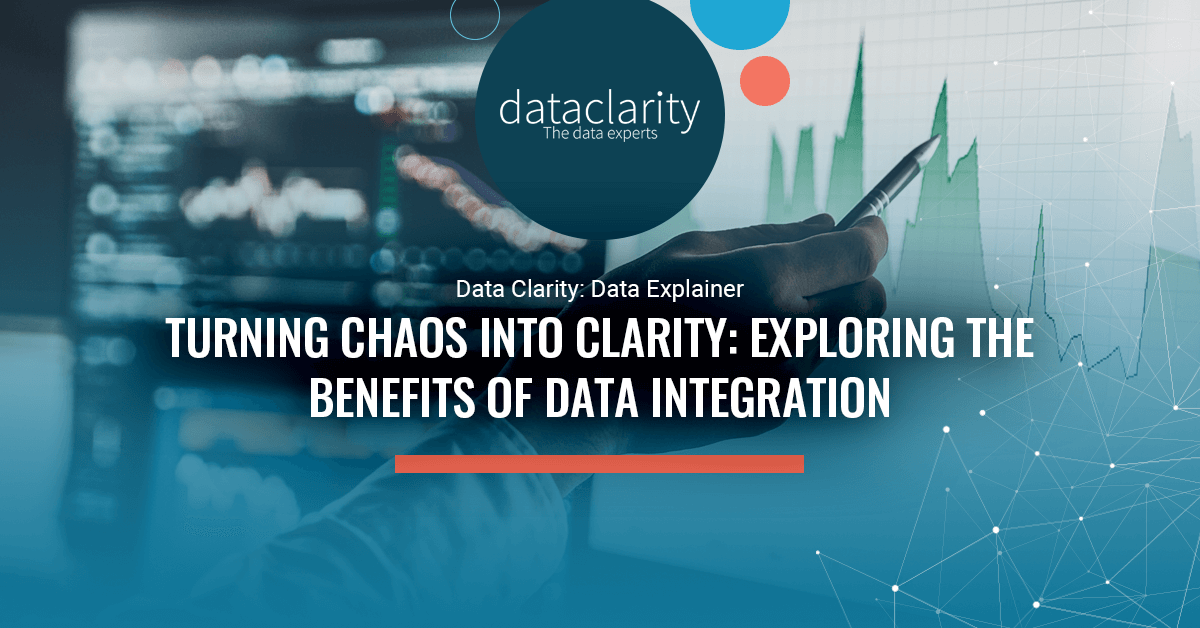Turning Chaos into Clarity: Exploring the Benefits of Data Integration
27th June 2023
Data Integration is the process of combining data from different sources into a single, unified view. This has become a vital component as organisations heavily rely on data for informed decision-making, optimising operations and driving innovation. Below, we explore the benefits of data integration in more detail.
By bringing together data from multiple sources and systems, organisations will gain a helicopter view of their operations, customers, and markets, improving decision-making, increasing efficiency, and accelerating growth.
What are the Benefits of Data Integration?
Data Integration provides numerous advantages to businesses across a variety of industries, and in this blog, we will uncover the wide range of the benefits of data integration, including:
Improved Decision Making
Data integration improves decision-making by providing organisations with a unified view of their data. It enhances decision-making through complete and holistic data, ensuring accuracy and reliability. This enables real-time insights, facilitating enhanced data analysis, and promoting improved collaboration.
Considering all relevant information, businesses can make informed decisions by relying on accurate data and uncover insights through analytics to make proactive decisions.
Retail companies, for example, are leveraging data to transform the way they interact with customers and operational practices. By integrating data from point-of-sale, inventory management, and customer relationship management (CRM) systems, this provides a comprehensive view of sales and customer interactions. This helps identify top-selling products, valuable customer segments, and the most effective marketing campaigns to enhance traction and success. The resulting impact is expected to increase conversion rates on marketing activities by 40%.
Cost Savings
Organisations can automate manual tasks, streamline their processes, and minimise the need for human interaction. This not only saves valuable time and resources but also reduces the risks associated with manual processes, such as human errors and higher expense. With automated data integration, businesses can achieve cost reductions and enhance operational efficiency.
Enhanced Customer Experiences
By integrating your data, you can automatically provide customers with deeper insights in a way that’s personalised to their needs, enhancing the customer experience, improving efficiency, and creating satisfaction for both parties involved.
- Personalisation: Data that’s been integrated from different sources enables businesses to have a single customer-view of their customers and their preferences, allowing businesses to tailor products, services, and marketing efforts, which can lead to a greater personalised and satisfying customer experience.
- Improved Communication: Gaining a complete understanding of customer data through a unified view enables your organisation to enhance their knowledge of customer communication preferences and behaviours, which can help to improve customer communication strategies by utilising suitable channels (e.g., email, social media) and crafting messaging that resonates with customers.
- Efficient Problem Solving: Integrated data simplifies the process of identifying and resolving customer issues and complaints.
- Greater Convenience: Data integration streamlines processes, minimising the time and effort customers spend on interaction.
Increased Innovation
Data integration is a catalyst for innovation, driving organisations towards new opportunities and advancements. It improves the quality and accessibility of data, ensuring that accurate and comprehensive information through reports, dashboards and visualisations is readily available for analysis. By bringing together data from multiple sources making it easier to uncover valuable insights, trends, and patterns. Also, the accessibility of this information can be used for informed decision-making, forming the basis for discussion which increases collaboration across departments.
Improved Security
By centralising diverse data sources into a unified platform, businesses can enhance their ability to monitor and regulate access to sensitive information. This consolidated approach diminishes data breaches and unauthorised entry, thereby reducing cyber risks and fortifying overall cybersecurity measures.
Did you know Data Clarity’s data integration solutions provide a scalable, complete data integration platform? The platform allows users to extract data from multiple sources, transform it and load (ETL) the data to any system – compatible with both third-party and Data Clarity’s suite of analysis tools – to deliver faster time-to-value and reduced IT risk.
The integrated platform delivers a wide range of data quality capabilities from data profiling, standardisation, matching and enrichment to active data-quality monitoring. Find out more about our capabilities here.
Ultimately, data integration is a valuable tool to empower organisations, and as we explored the benefits of data integration, businesses that fully leverage their data’s potential will undoubtedly achieve remarkable success.
